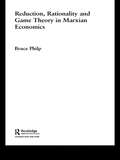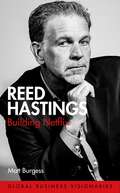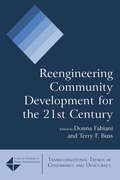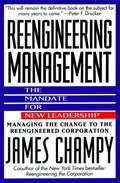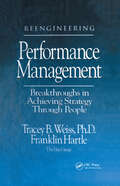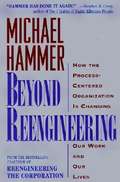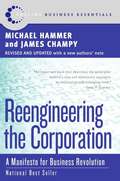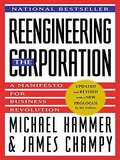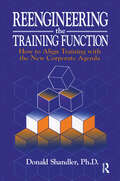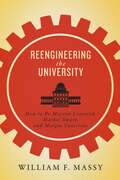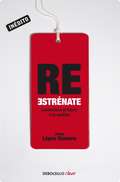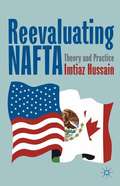- Table View
- List View
Reduction, Rationality and Game Theory in Marxian Economics (Routledge Frontiers Of Political Economy Ser. #Vol. 66)
by Bruce PhilpThis book examines the main areas of interest in Marxian economics, paying particular attention to class conflict, analytical Marxism and game theory. Very few books can claim to cover the areas that this book does with such clarity, academic rigour and originality. Its study of game theory and Marxism makes it a particularly unique book that will
Reductions in U.S. Domestic Spending
by John Williams EllwoodFirst Published in 2017. Routledge is an imprint of Taylor & Francis, an Informa company.
Reebok International Ltd.
by John A. Quelch Tammy Bunn HillerReebok executives are reviewing the company's advertising and promotion programs for the second half of 1988. These include sponsorship of the 1988 Summer Olympics and a rock concert tour organized by Amnesty International. In addition, Reebok is launching a new advertising campaign with the slogan "Reeboks Let U.B.U."
Reed Hastings: Building Netflix
by Matt BurgessReed Hastings is one of the world's foremost business leaders. As co-founder, chairman and CEO of Netflix, he has built one of the largest media and entertainment companies on the planet, with an estimated personal net worth of $3.6 billion. A notable philanthropist, he has served on the boards of a number of non-profit organisations as well as Facebook and Microsoft.This concise but detailed biography provides an overview of Hastings' career trajectory. From his unique management style to the biggest mistakes he has made along the way, to the reasons behind his decision to take Netflix from a business that dealt with products (rental DVDs) to a technology company that focuses on streaming, Burgess sheds light on Hastings' success and looks to what the future may bring for him and his ventures.Aspirational and positive, this is the perfect book for those looking for a concise and accessible account of a true global business visionary.
Reed Hastings: Building Netflix
by Matt BurgessReed Hastings is one of the world's foremost business leaders. As co-founder, chairman and CEO of Netflix, he has built one of the largest media and entertainment companies on the planet, with an estimated personal net worth of $3.6 billion. A notable philanthropist, he has served on the boards of a number of non-profit organisations as well as Facebook and Microsoft.This concise but detailed biography provides an overview of Hastings' career trajectory. From his unique management style to the biggest mistakes he has made along the way, to the reasons behind his decision to take Netflix from a business that dealt with products (rental DVDs) to a technology company that focuses on streaming, Burgess sheds light on Hastings' success and looks to what the future may bring for him and his ventures.Aspirational and positive, this is the perfect book for those looking for a concise and accessible account of a true global business visionary.
Reed Supermarkets: A New Wave of Competitors
by John A. Quelch Carole CarlsonReed Supermarkets is a high-end supermarket chain with operations in several Midwestern states. Meredith Collins, vice president of marketing, visits stores located in Columbus, Ohio, an important region with the largest market and the greatest impact on revenue growth. She is concerned about increased competition from dollar stores and limited-assortment stores offering very low, appealing price points. Reed's market research shows that as a result of the economic downturn, customer loyalty is dwindling and consumers are willing to go to multiple stores to get the best deals. Collins must decide whether to change the current marketing and positioning plan in an effort to increase market share to meet challenging corporate targets. Her options include retreating from price competition and focusing on quality or embracing more private-label brands and competing more aggressively on price. She can also maintain the current positioning and appeal to customers looking for a quality shopping experience. The case contains an implicit quantitative assignment that instructors can emphasize to the degree they choose.
Reefer Madness: Sex, Drugs, and Cheap Labor in the American Black Market
by Eric SchlosserEssays explore the social and economic effects on groups and individuals of our underground economy. The underground economy has subtle and surprising effects on the United States as.
Reefer Madness: Sex, Drugs, and Cheap Labor in the American Black Market
by Eric SchlosserNew York Times Bestseller: The shadowy world of &“off the books&” businesses—from marijuana to migrant workers—brought to life by the author of Fast Food Nation. America&’s black market is much larger than we realize, and it affects us all deeply, whether or not we smoke pot, rent a risqué video, or pay our kids&’ nannies in cash. In Reefer Madness, the award-winning investigative journalist Eric Schlosser turns his exacting eye to the underbelly of American capitalism and its far-reaching influence on our society. Exposing three American mainstays—pot, porn, and illegal immigrants—Schlosser shows how the black market has burgeoned over the past several decades. He also draws compelling parallels between underground and overground: how tycoons and gangsters rise and fall, how new technology shapes a market, how government intervention can reinvigorate black markets as well as mainstream ones, and how big business learns—and profits—from the underground. &“Captivating . . . Compelling tales of crime and punishment as well as an illuminating glimpse at the inner workings of the underground economy. The book revolves around two figures: Mark Young of Indiana, who was sentenced to life in prison without parole for his relatively minor role in a marijuana deal; and Reuben Sturman, an enigmatic Ohio man who built and controlled a formidable pornography distribution empire before finally being convicted of tax evasion. . . . Schlosser unravels an American society that has &‘become alienated and at odds with itself.&’ Like Fast Food Nation, this is an eye-opening book, offering the same high level of reporting and research.&” —Publishers Weekly
Reel Inequality: Hollywood Actors and Racism
by Nancy Wang YuenWhen the 2016 Oscar acting nominations all went to whites for the second consecutive year, #OscarsSoWhite became a trending topic. Yet these enduring racial biases afflict not only the Academy Awards, but also Hollywood as a whole. Why do actors of color, despite exhibiting talent and bankability, continue to lag behind white actors in presence and prominence? Reel Inequality examines the structural barriers minority actors face in Hollywood, while shedding light on how they survive in a racist industry. The book charts how white male gatekeepers dominate Hollywood, breeding a culture of ethnocentric storytelling and casting. Nancy Wang Yuen interviewed nearly a hundred working actors and drew on published interviews with celebrities, such as Viola Davis, Chris Rock, Gina Rodriguez, Oscar Isaac, Lucy Liu, and Ken Jeong, to explore how racial stereotypes categorize and constrain actors. Their stories reveal the day-to-day racism actors of color experience in talent agents’ offices, at auditions, and on sets. Yuen also exposes sexist hiring and programming practices, highlighting the structural inequalities that actors of color, particularly women, continue to face in Hollywood. This book not only conveys the harsh realities of racial inequality in Hollywood, but also provides vital insights from actors who have succeeded on their own terms, whether by sidestepping the system or subverting it from within. Considering how their struggles impact real-world attitudes about race and diversity, Reel Inequality follows actors of color as they suffer, strive, and thrive in Hollywood.
Reel Lessons in Leadership
by Ralph R. DisibioThis book is about studying leadership greatness through the unique and unparalleled platform of Hollywood films.
Reengineering Capitalism
by Jan EmblemsvågThis book provides an innovative approach to sustainable development, one based on insights gleaned from the Industrial Revolution to the present, and which highlights the importance of aligning economic interests with sustainable development considerations. It investigates how a broad-based systematic approach can be used to develop societies sustainably by integrating environmental issues into the capitalist system without value-laden approaches, which produce little more than politics and inaction as we are witnessing today. The proposed approach focuses on realigning the financial markets to providing capital at reasonable cost to fuel innovation towards sustainable development across the entire economy. This requires government policies that level the playing field and also intervene strategically in cases where the playing field is weak or missing . Intended for researchers, policy-makers and graduate students, the book will also benefit non-governmental organizations, economists and the general public.
Reengineering Community Development for the 21st Century
by Terry F. Buss Donna FabianiThis timely book takes a wide-angled look at how the field of community development is evolving in an era of reduced resources, changing priorities, privatization, competition, and performance management at the federal, state, and local government levels, as well as for non-profits and private sector entities. It shows how community development organizations and programs are offering many new services, entering into new partnerships, developing extensive networks, and attracting new and alternative sources of funding - and how, in the process, these organizations are becoming more innovative, leaner in their operations, more competitive, and much more effective than ever before.Students, researchers, and policy-makers will all appreciate the numerous policy examples from the local, state, and federal levels, including a wide range of developments in housing, transportation, smart growth, education, and crime prevention. "Reengineering Community Development for the 21st Century" is an invaluable source for insights into the latest developments in community development financing and performance management.
Reengineering Corporate Communication: A Marketer’s Perspective Offering New Concepts, Processes, Tools, and Templates (Future of Business and Finance)
by Uwe SeebacherThis book employs the latest insights from modern marketing into the theory and practice of corporate communication, including the main stages and goals, and highlights the key potentials for the field. It briefly presents the essential features of the methodological and structural sciences in order to illustrate to the reader how, from a marketer's point of view, these new insights can be derived objectively, reliably, and validly for the field of corporate communication according to scientific criteria. The book then introduces the maturity model for modern corporate communication and describes which fields of activity must be gone through in order to be able to implement the change management process towards corporate communication excellence efficiently and effectively. Building on this, it introduces and defines the most important new concepts of corporate communication in the twenty-first century and thus clearly delineates the field of research for this corporate function in the coming years. The book goes on to address the important areas of IT and HR in order to provide a 360° view of the developments to be realized in the field of corporate communication. A “CC self-test” at the end of the book is intended to help the reader immediately recognize where their own organization stands and, against this backdrop, to be able to start the necessary activities towards corporate communication excellence immediately on the basis of the maturity model. “Prof. Dr. Uwe Seebacher takes us on a timely and informative read on what could be the biggest crisis for Corporate Communications – remaining stagnant in a time of great change. With rich context and fine detail, he illuminates the opportunities to reengineer Corporate Communications and quantify its role in truly impacting business. From the importance of predictive intelligence underpinned by authenticity and empathy to building trust, this book is a guide for successful business in the 21st Century. I highly recommend it.”Heidi Eusebio, Strategist and Executive Director, Edelman "Uwe Seebacher has once again demonstrated in a well-founded manner what methodological and structural science is capable of - namely, to precisely logically derive the long overdue process of change in the field of corporate communications and thereby make it comprehensible. But he also takes the important next step of operationalizing his thoughts in a directly measurable way by providing an easy applicable concrete process model for reengineering corporate communication with many tips, templates and inputs for HR and IT.“ Miguel Gimenez de Castro, Head Of Communications Spain, Portugal, Greece and Israel, IBM
Reengineering Management
by James ChampyThe co-author of the monumental bestseller Reengineering the Corporation continues the reengineering revolution with another national bestseller that has already sold more than 165,000 copies in hardcover Reengineering Management is a brilliant, practical and much needed book on the most powerful management idea of the decade. Reengineering-changing the traditional and outdated organization, processes and culture of a company-is corporate America's greatest challenge today. In Reengineering Management, Champy examines the far-reaching changes managers must make for themselves and their companies to succeed in an era of unprecedented competition. Through his extensive consulting and research work, he shows how reengineering succeeds only when managers reinvent their own jobs and managerial styles. Otherwise, the ultra-efficient and effective reengineered processes for acquiring and serving customers, filling orders, bringing new concepts to market and other key business activities eventually fall apart. Champy illustrates this new management agenda through first-hand experiences of managers of reengineered operations at Federal Express, Wisconsin Electric, CIGNA Health Care, Hewlett-Packard, AT&T Universal Card Services and other companies. Champy shows how they are mastering the managerial challenges of reengineering, and as a result are making their organizations exciting and competitive. As more and more organizations reengineer, the experiences of these managers will become an insiders' guide to managerial life in the company of the future. Reengineering Management picks up where Reengineering the Corporation left off-by exploring the managerial implications of the reengineered workplace. As reengineering becomes critical to all organizations, Reengineering Management will be the road map for managerial success in the future. It is, indeed, the manifesto for the next managerial revolution.
Reengineering Performance Management Breakthroughs in Achieving Strategy Through People
by Tracey Weiss Franklin HartleLooking for the ultimate book to help reengineer the way your company manages performance? Here is a major work that lays the groundwork for successful change at virtually every step in maximizing individual, team and organizational effectiveness. It is ideal for any manager responsible for performance improvement or human resource development.The authors, both experienced in competency-based human resource development and management, provide the reader with insight into performance management as a strategic tools and change lever-not a dreaded, bureaucratic hurdle. Readers are empowered to achieve their goals faster and more effectively by mobilizing people with whom they work. Senior human resources and line managers in organizations of all sizes will find answers to many of their most challenging people-related questions in Reengineering Performance Management.Numerous case studies from companies on the cutting edge of performance management illustrate the major themes of the text. Critically peer reviewed, this book offers the benefit of successful methods that have been tried and tested over the past 50 years, along with the most advanced and up-to-date knowledge in the field of performance management.
Reengineering Work: Don't Automate, Obliterate
by Michael HammerCompanies rarely achieve radical performance improvements when they invest in information technology. Most companies use computers to speed up, not break away from, business processes and rules that are decades, if not centuries, out of date. But the power of computers can be released by "reengineering" work: abandoning old ways of working and creating entirely new ones.
Reengineering a Business Process
by Thomas H. DavenportDescribes the six steps included in most reengineering initiatives: selecting the processes for reengineering; identifying change enablers; developing a business vision of process objectives; understanding and measuring existing processes; designing and prototyping the new processes; and implementing the new processes.
Reengineering the Corporation
by Michael Hammer James ChampyThe most successful business book of the last decade, Reengineering the Corporation is the pioneering work on the most important topic in business today: achieving dramatic performance improvements. This book leads readers through the radical redesign of a company's processes, organization, and culture to achieve a quantum leap in performance. Michael Hammer and James Champy have updated and revised their milestone work for the New Economy they helped to create -- promising to help corporations save hundreds of millions of dollars more, raise their customer satisfaction still higher, and grow ever more nimble in the years to come.
Reengineering the Corporation: A Manifesto for Business Revolution
by Michael Hammer James ChampyThe most successful business book of the last decade, Reengineering the Corporation is the pioneering work on the most important topic in business today: achieving dramatic performance improvements.
Reengineering the Training Function: How to Align Training With the New Corporate Agenda
by Donald ShandlerIf you have questions about how to meet the demands of the new economy, corporate and organizational agendas, and the changing workplace you will find the answers in this well-written and concise book. Reengineering the Training Function provides a plan of action rich in strategies and tactics, full of specific guidelines and tools that can be put to use immediately.Learn how successful business reengineering and training practices parallel the reengineering of business processes. Any business that wants to remain competitive in a global marketplace will find this book relevant. Put these guidelines to work immediately to conduct a strategic training audit prior to initiating any reengineering process. You can change the process of training and control the new continuous learning organization with Reengineering the Training Function.
Reengineering the University: How to Be Mission Centered, Market Smart, and Margin Conscious
by William F. MassyHow can colleges and universities improve efficiency while preserving academic values?Winner of the Typographic Jacket of the Washington PublishersHigher education expert William F. Massy’s decades as a professor, senior university officer, and consultant have left him with a passionate belief in the need for reform in America’s traditional universities. In Reengineering the University, he addresses widespread concerns that higher education’s costs are too high, learning falls short of objectives, disruptive technology and education models are mounting serious challenges to traditional institutions, and administrators and faculty are too often unwilling or unable to change. An expert microeconomist, Massy approaches the challenge of reform in a genuinely new way by applying rigorous economic principles, informed by financial data and other evidence, to explain the forces at work on universities and the flaws in the academic business model. Ultimately, he argues that computer models that draw on data from college transaction systems can help both administrators and faculty address problems of educational performance and cost analysis, manage the complexity of planning and budgeting systems, and monitor the progress of reform in nonintrusive and constructive ways. Written for institutional leaders, faculty, board members, and policymakers who bear responsibility for initiating and carrying through on reform in traditional colleges and universities, Reengineering the University shows how, working together, administrators and faculty can improve education, research, and affordability by keeping a close eye on both academic values and the bottom line.
Reestrénate
by Josep López RomeroLos profundos cambios sociales y económicos que se han producido en los últimos años y la enorme incertidumbre en la que vivimos hoy día han puesto al descubierto nuestra fragilidad como seres humanos. El cambio es permanente y a todas horas diversas circunstancias nos devuelven implacablemente a la casilla de salida. Con sensibilidad y solvencia, Josep López Romero nos enseña a reinventarnos y a diseñar nuestro futuro paso a paso, tanto si nos hemos quedado sin trabajo como si acabamos de divorciarnos, tanto si hemos sufrido un accidente como si acabamos de perder a nuestro mejor amigo o, simplemente, porque no acabamos de sentirnos cómodos donde estamos. En este libro encontraremos la manera de superar los miedos y las creencias limitantes, y aprenderemos a gestionar las emociones asociadas al cambio, a trabajar la confianza, a recuperar la ilusión y a lograr, en definitiva, una vida más plena.
Reevaluating Incremental Innovation
by Harvard Business Review"A decade ago INSEAD marketing professor Marcel Corstjens was consulting with employees at a multinational consumer packaged goods company about ways to rejuvenate one of its biggest brands. During three days of meetings, he found a one-hour presentation by the company’s R&D team deeply fascinating. But no one else did. “There were many ideas that could have been developed,” he says, “but at the end of the R&D session everyone said, ‘OK, let’s get back to the communications and advertising issues,’ and nobody ever talked about the R&D again.” It’s no secret that large CPG companies are marketing powerhouses, but this apparent disregard for R&D insights stuck with him. Although CPG companies rank far behind high-tech and health care companies in R&D spending, some do devote more than $1 billion a year to R&D. Corstjens wondered: What kinds of returns are they getting?"
Reevaluating NAFTA: Theory and Practice
by Imtiaz HussainReevaluating NAFTA seeks to answer the question: has NAFTA integrated North America? A fifteen-year NAFTA appraisal finds trade expansion boosting optimism, but also unveils stark asymmetry between developed and developing countries as well as top-heavy NAFTA regulations seriously constraining ground-level integration. Using empirical data analysis and a wide-reaching theoretical context, this book seeks to evaluate the results of NAFTA's 'fifteen-year itch' to identify what worked and what didn't, and ultimately, to point to the future of North American integration.
Refeature to Cut Costs: Lessons from Disruptive Innovation for Tough Times
by Scott D. AnthonyIn tough times, it's common for leaders to ask their companies to figure out how to do more with less. It's a nice thing to say, but how exactly can a company do more with less? In this chapter, innovation expert Scott Anthony describes how to intelligently refeature existing products and services to cut costs. Core disruptive principles can help companies meet bottom-line profit targets and realize growth opportunities they might otherwise miss. This chapter was originally published as chapter 3 of "The Silver Lining: An Innovation Playbook for Uncertain Times."
